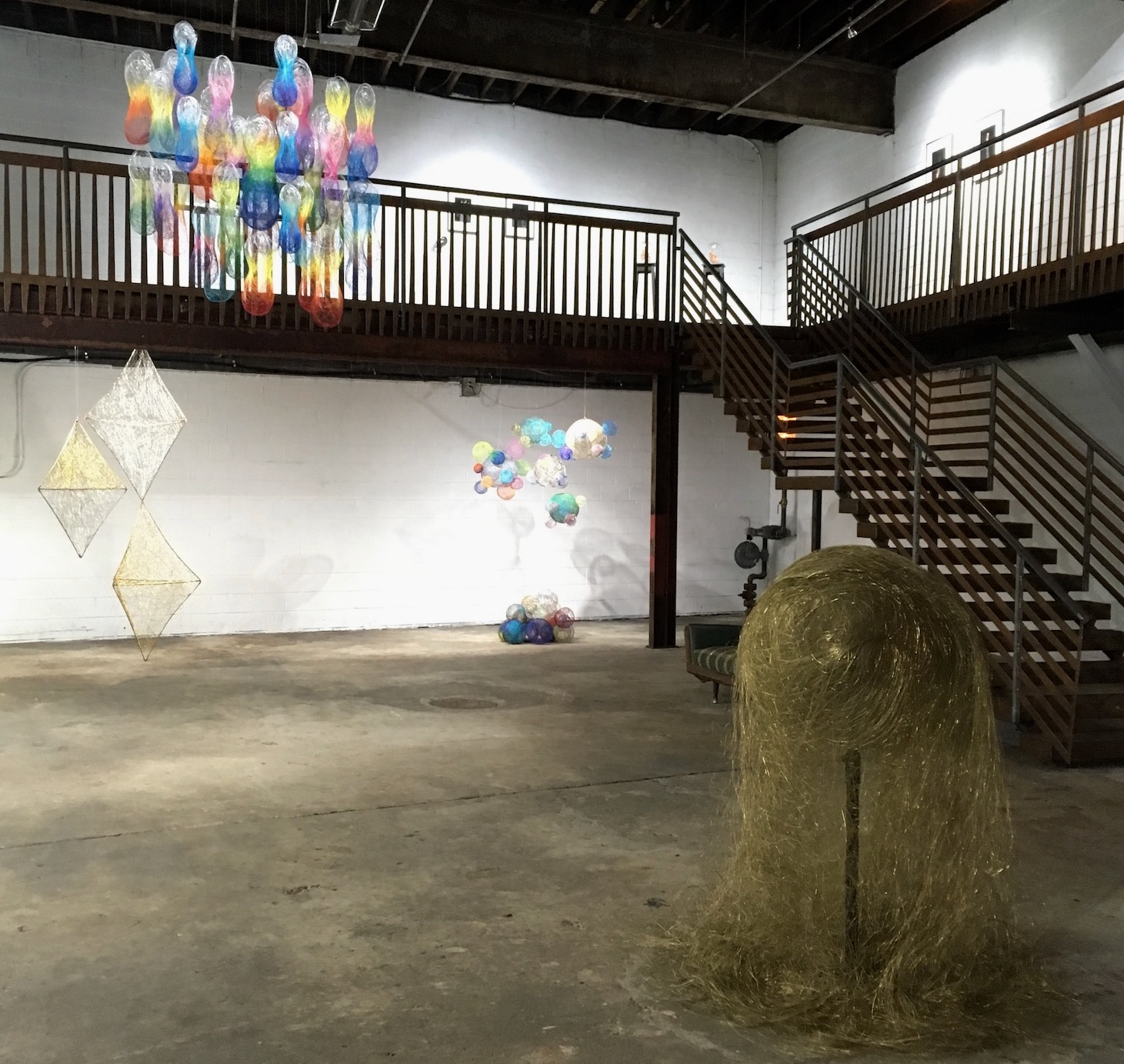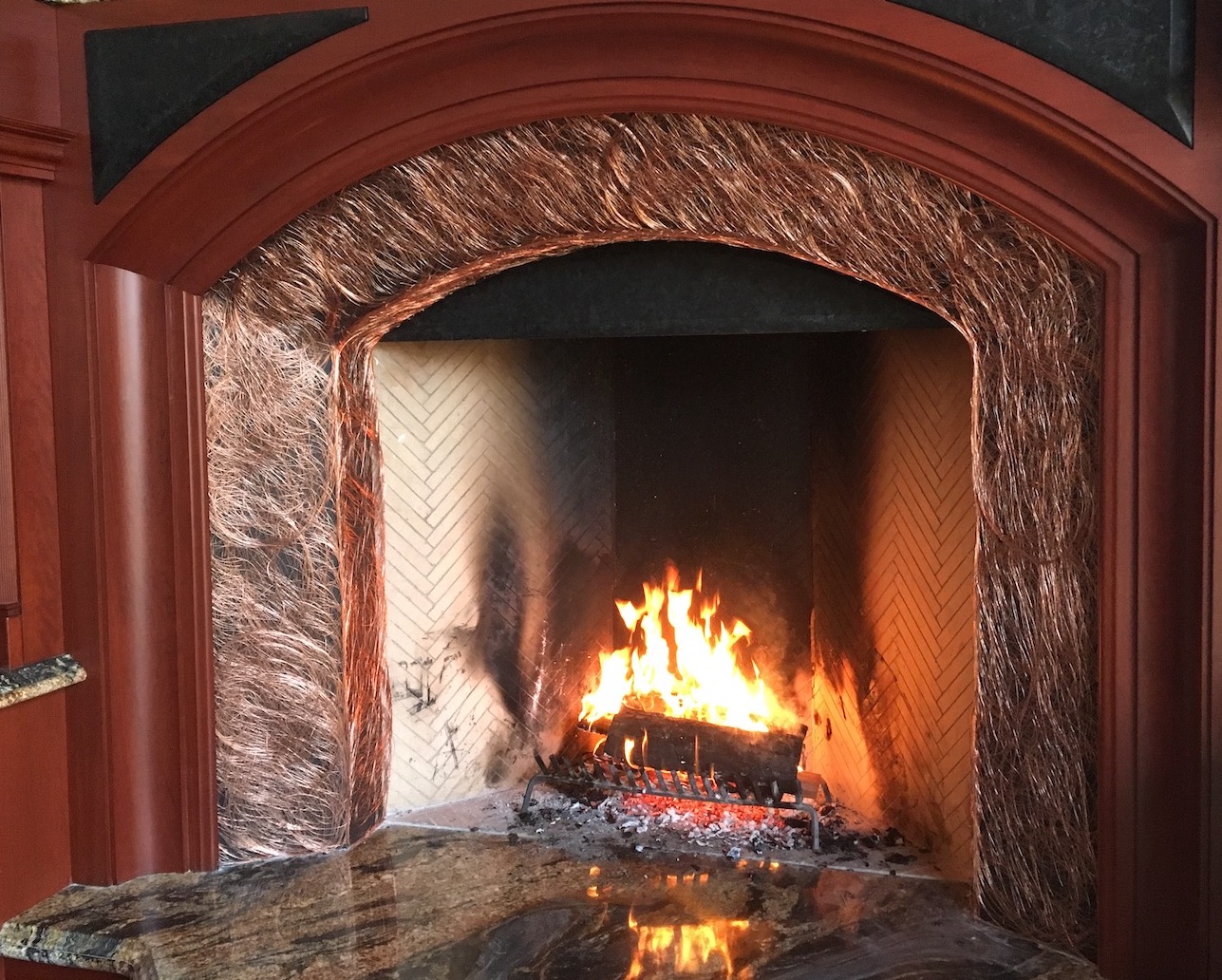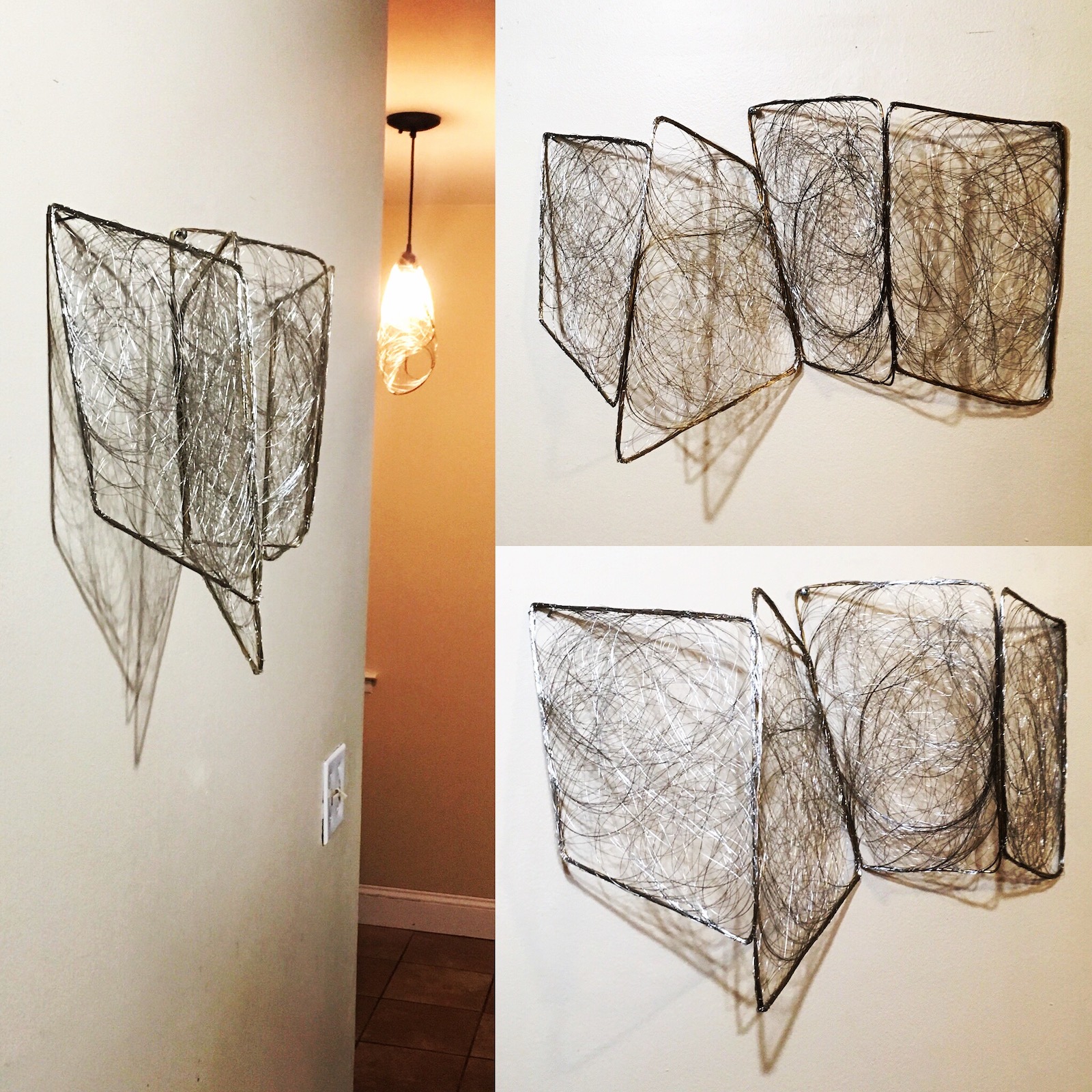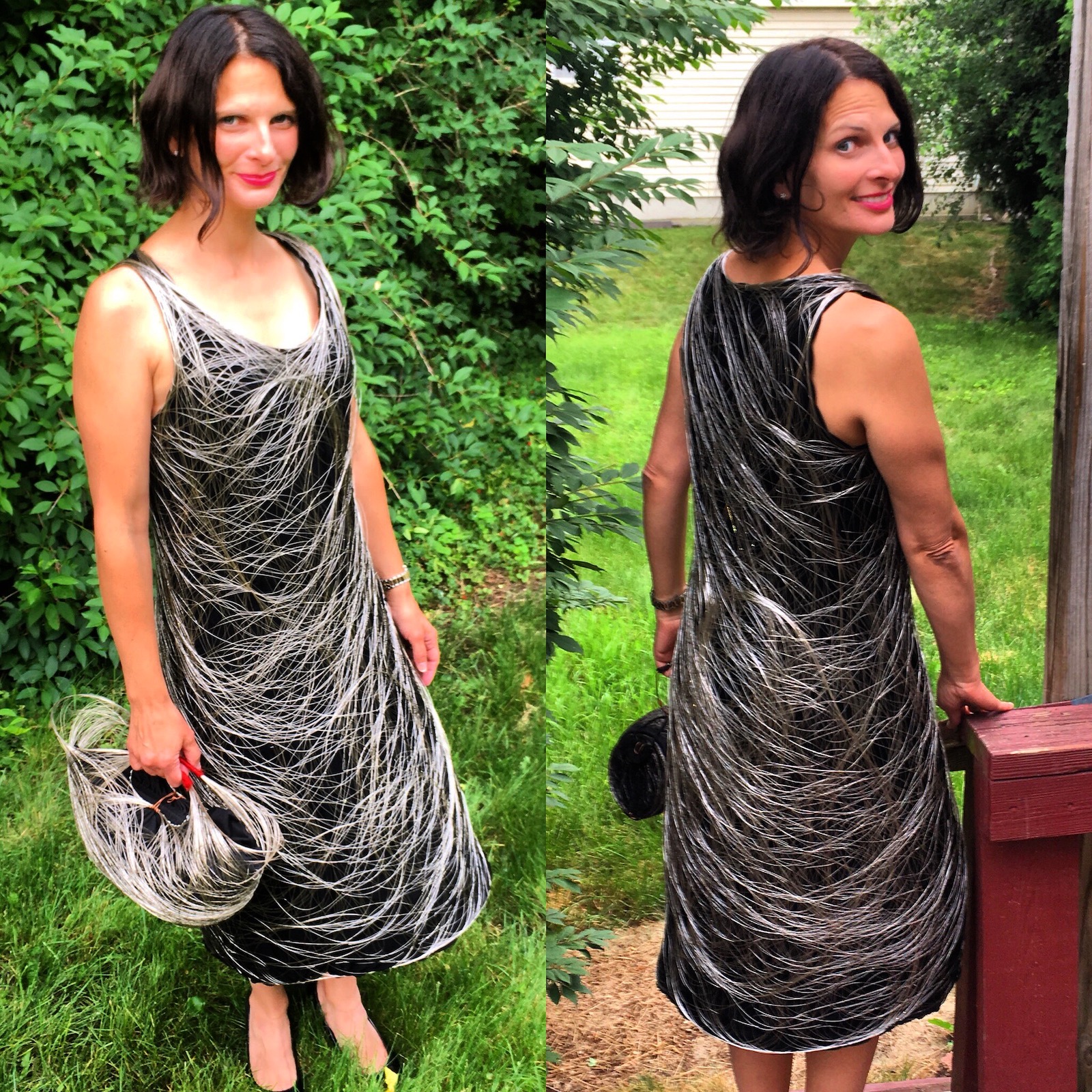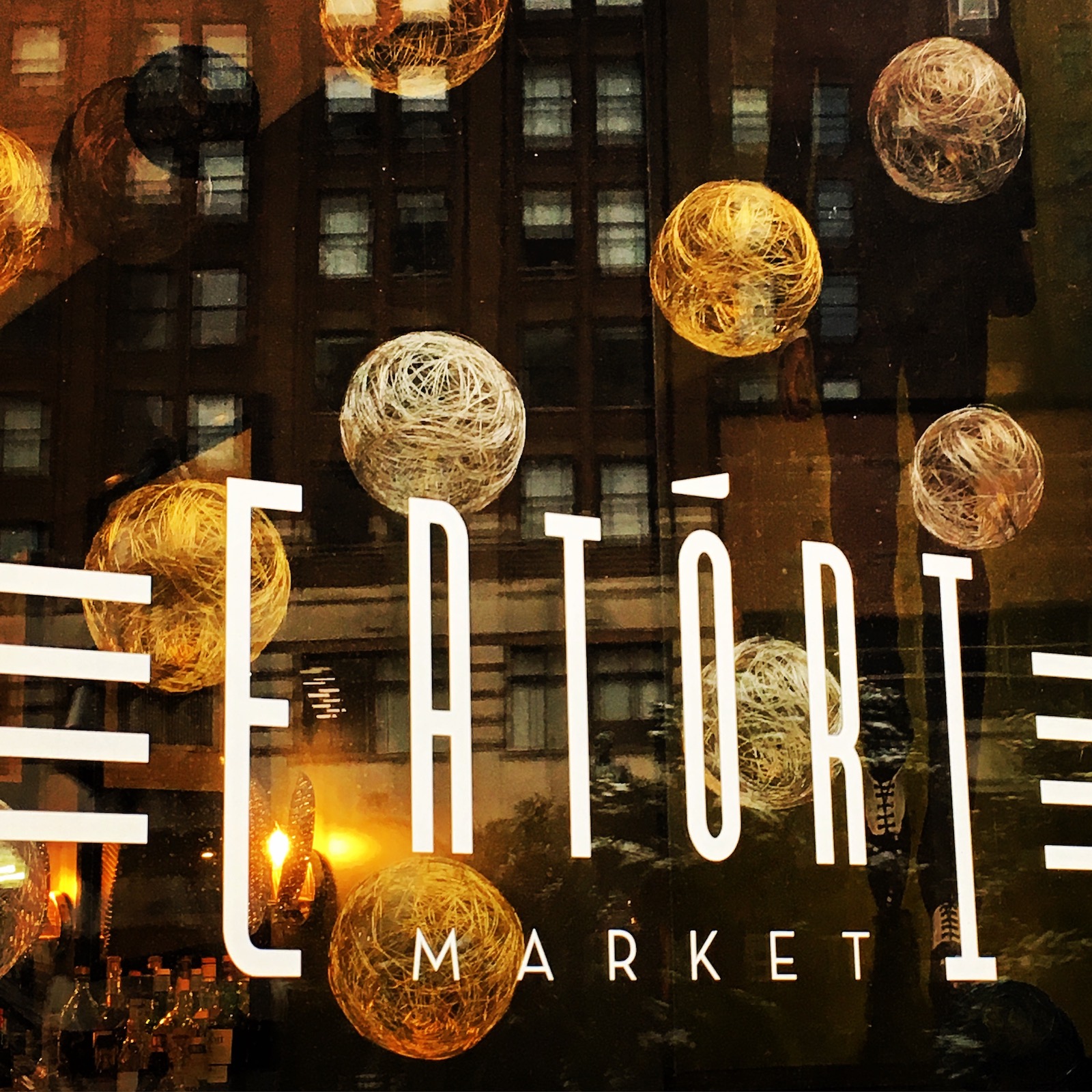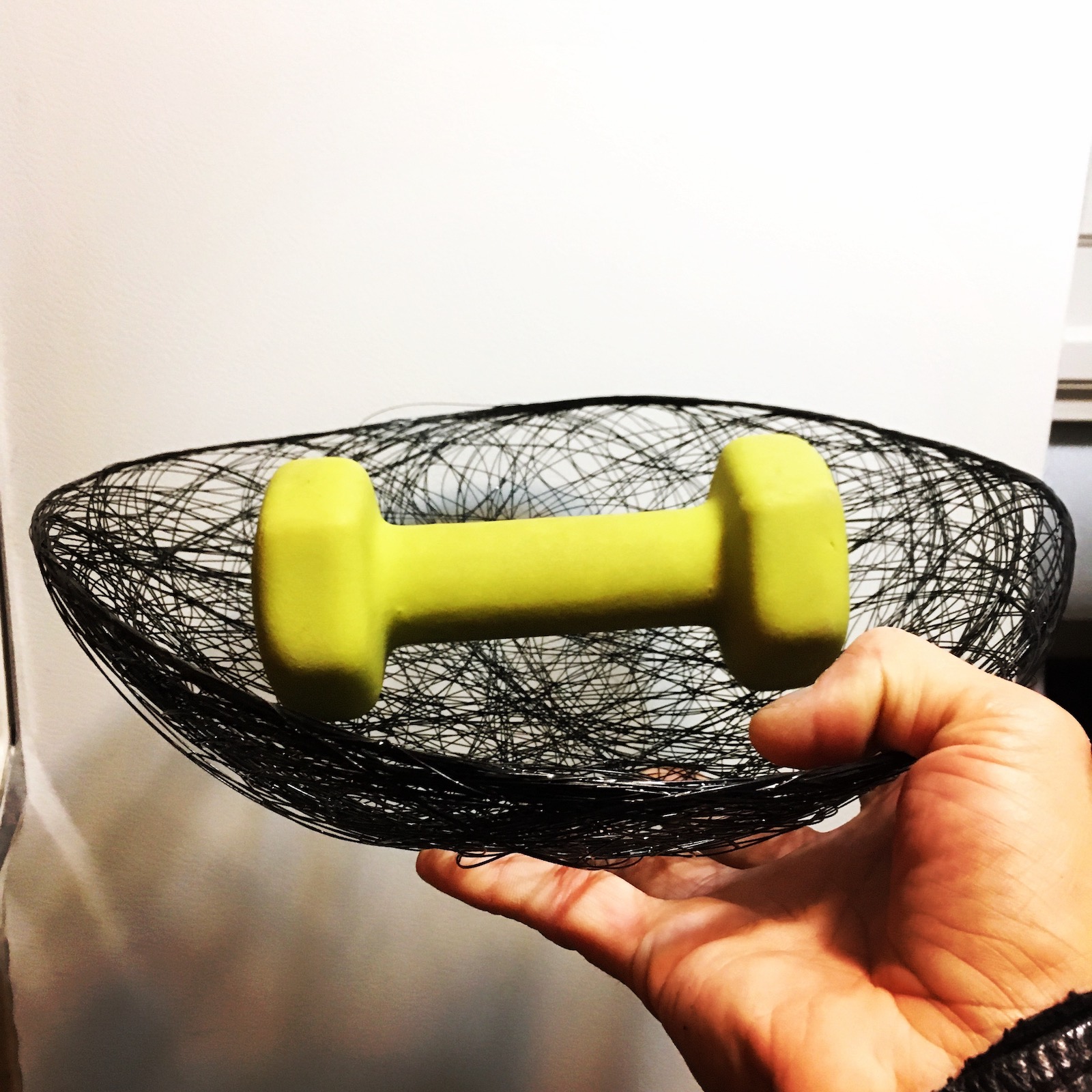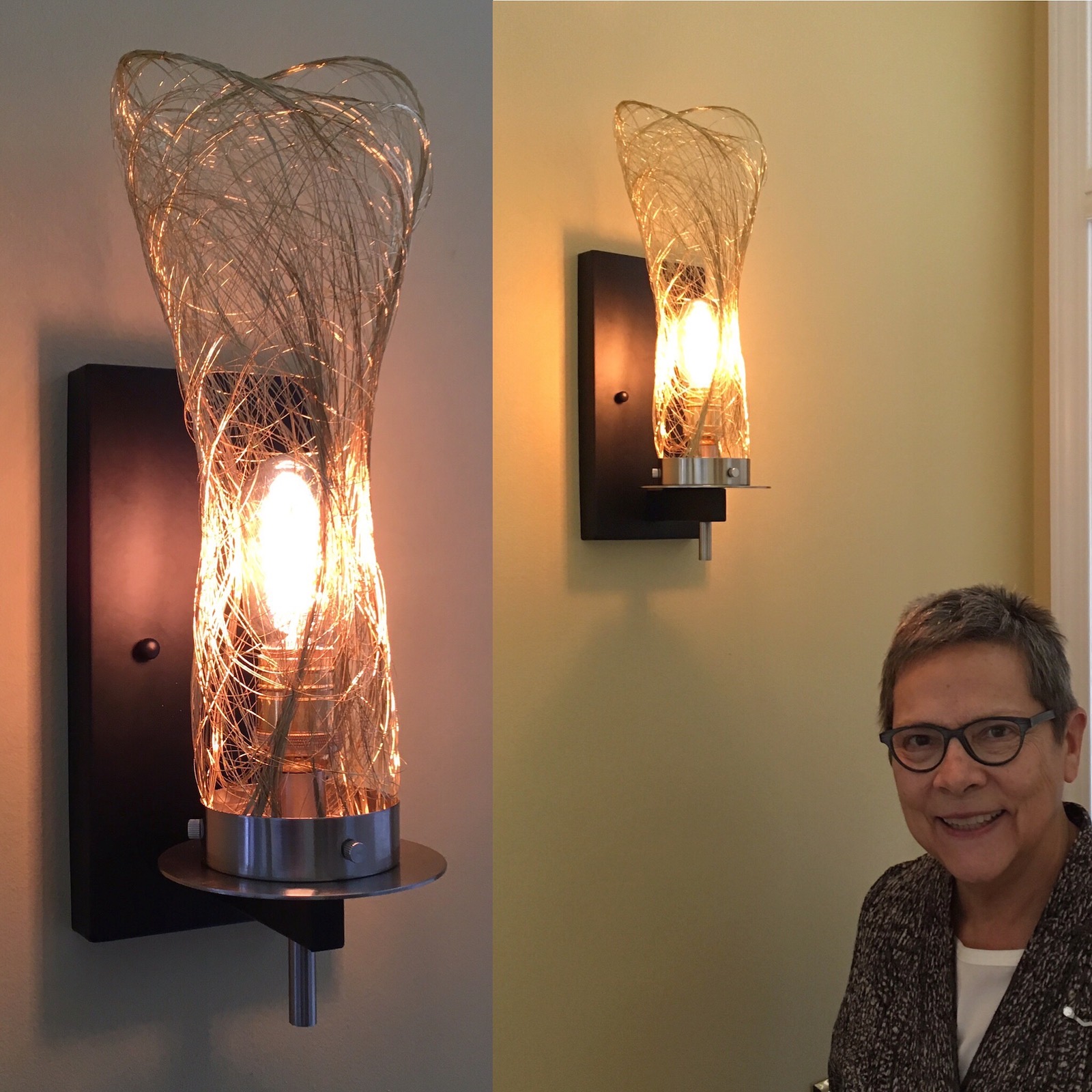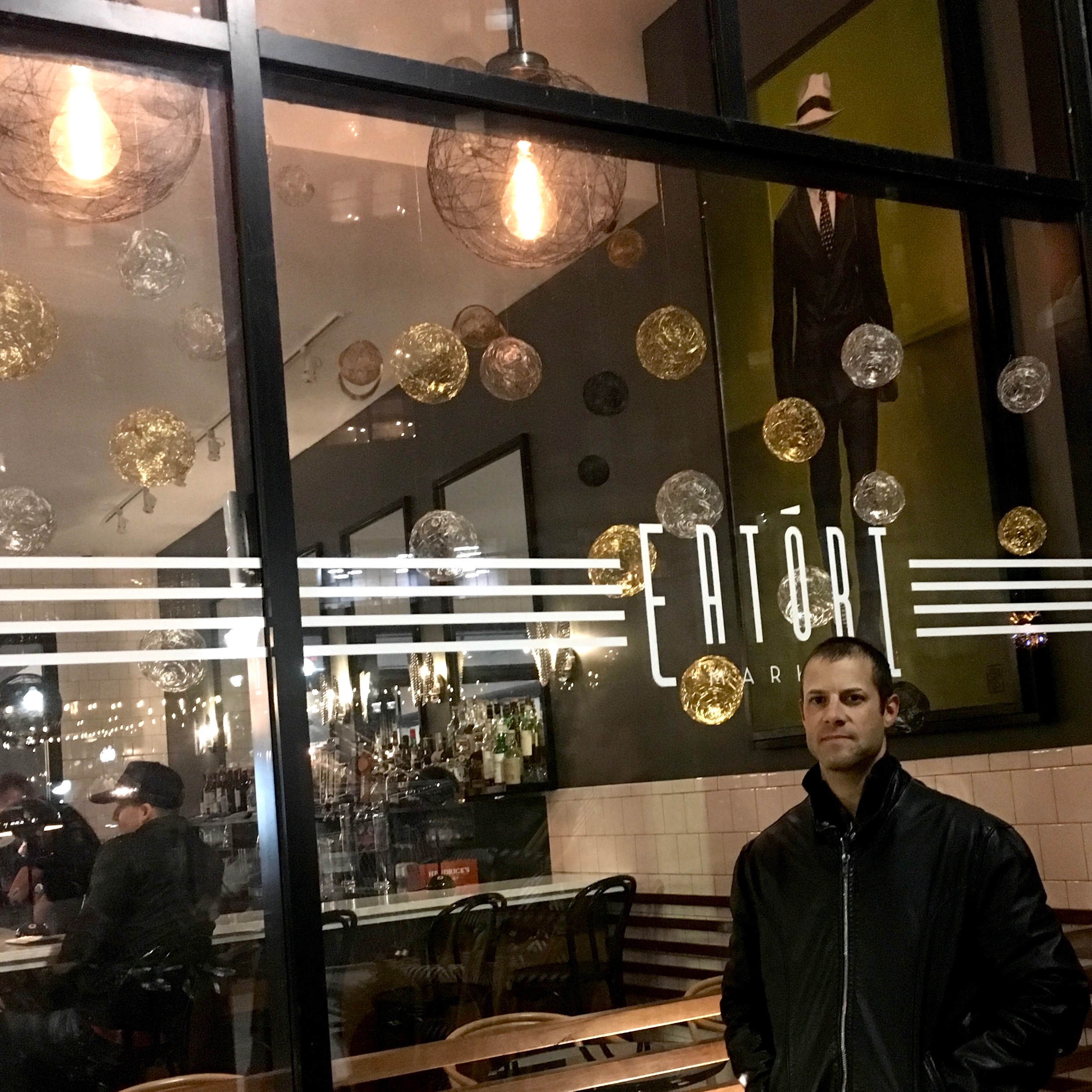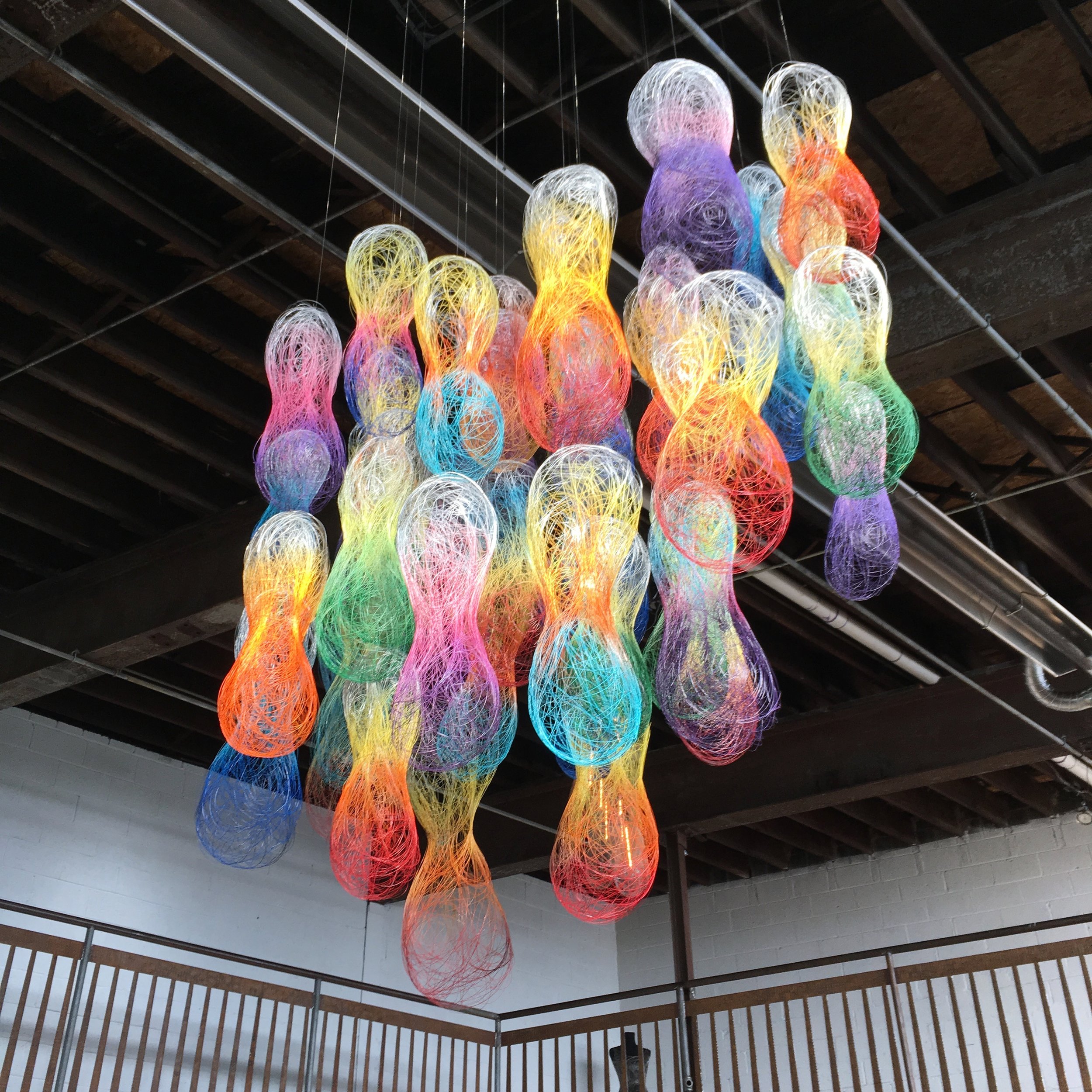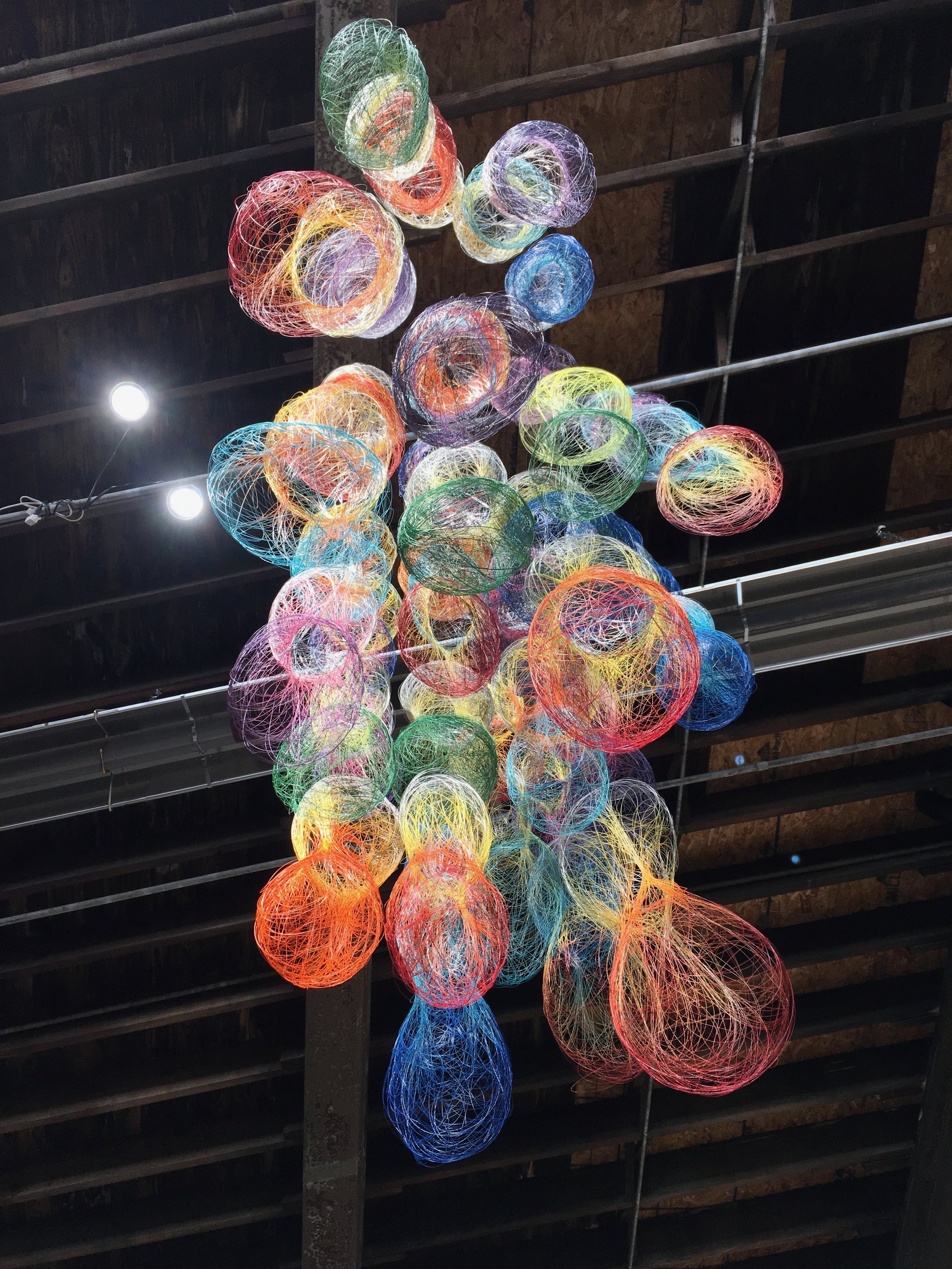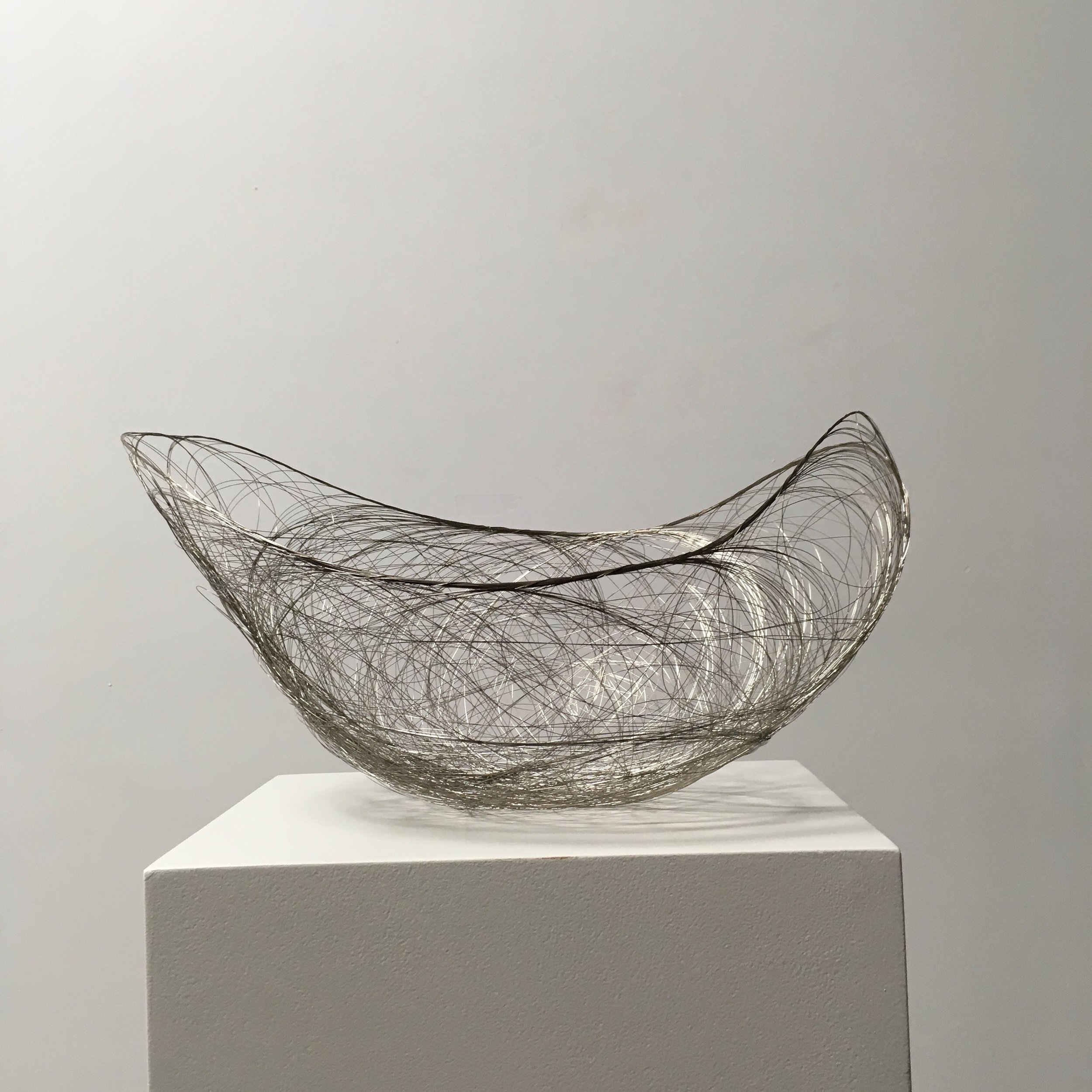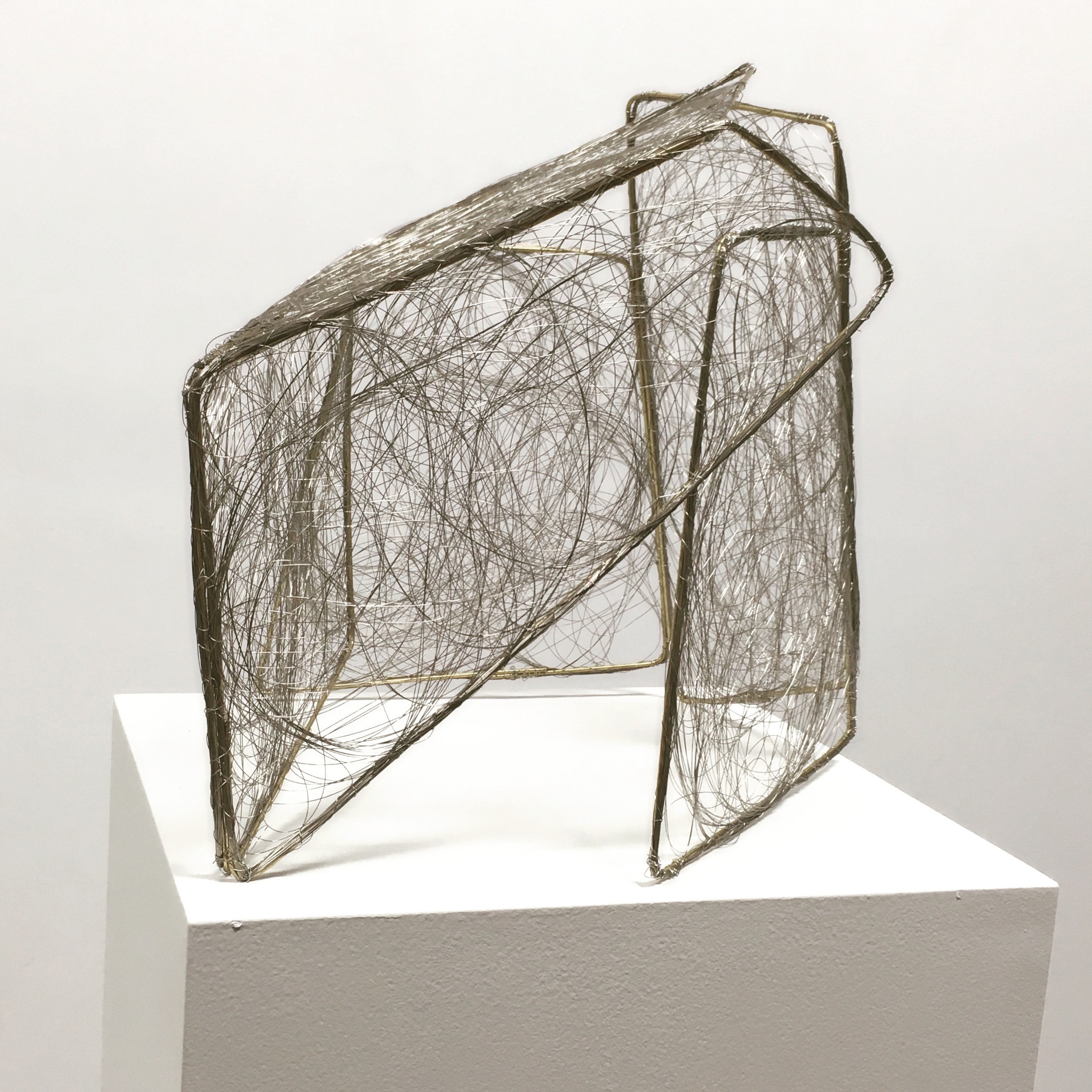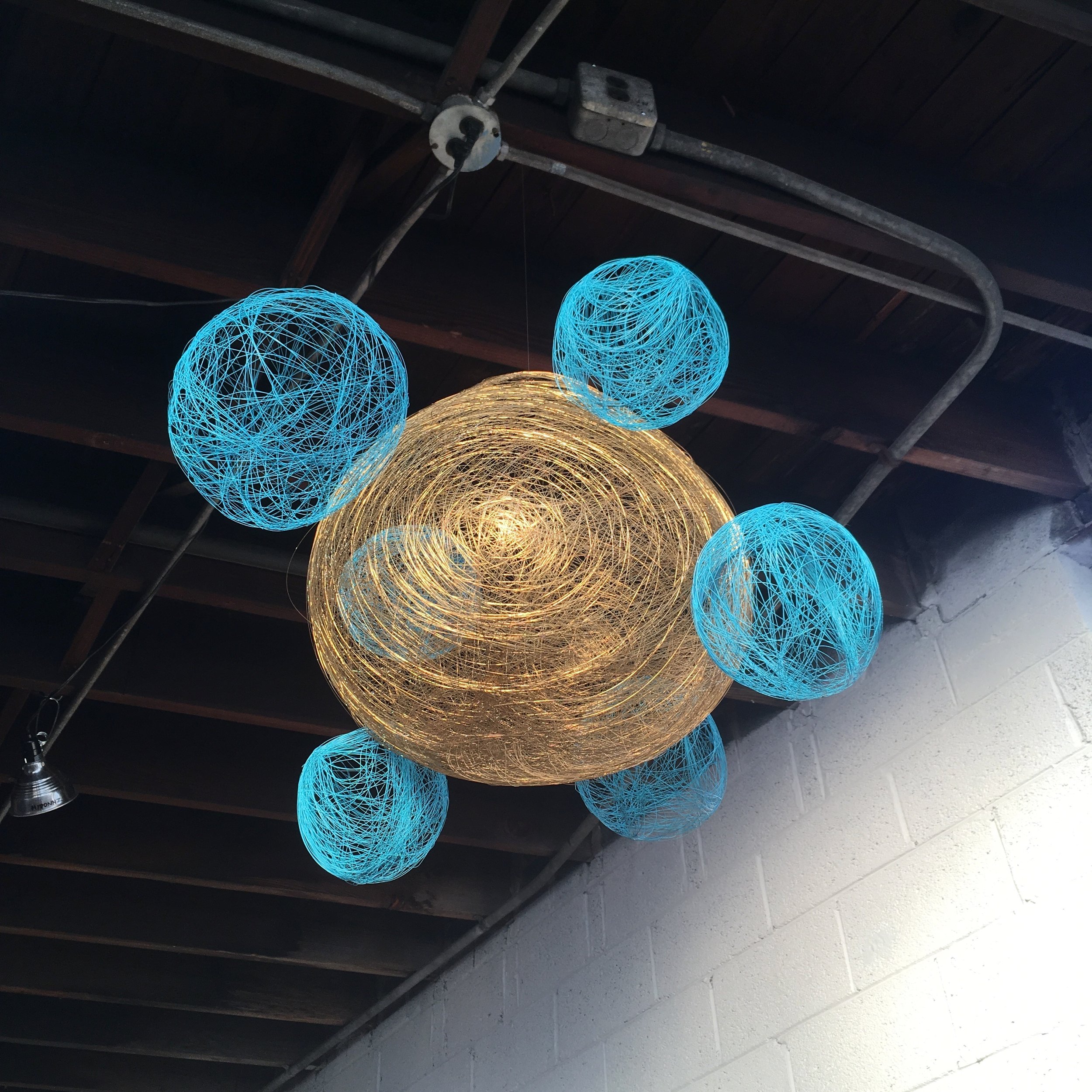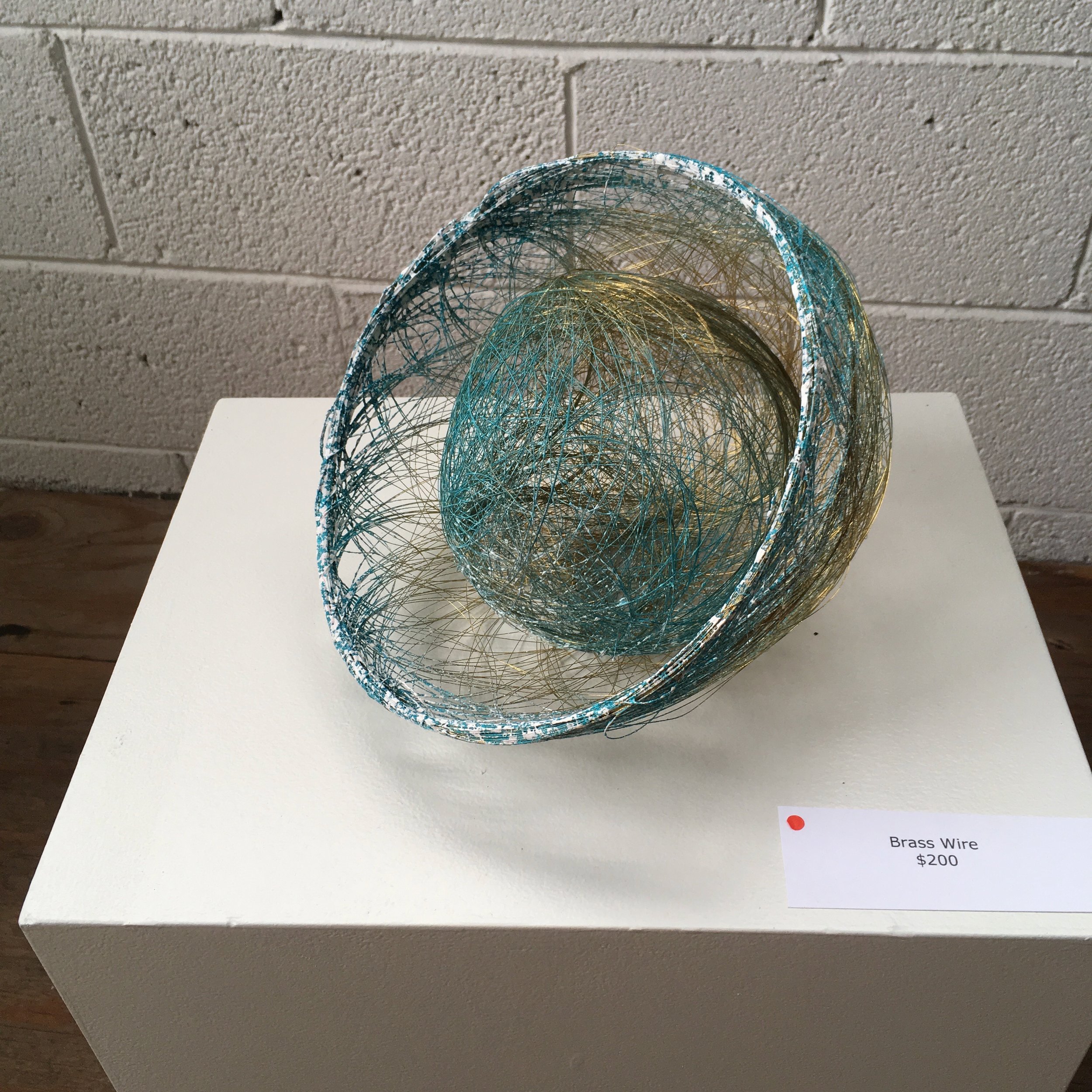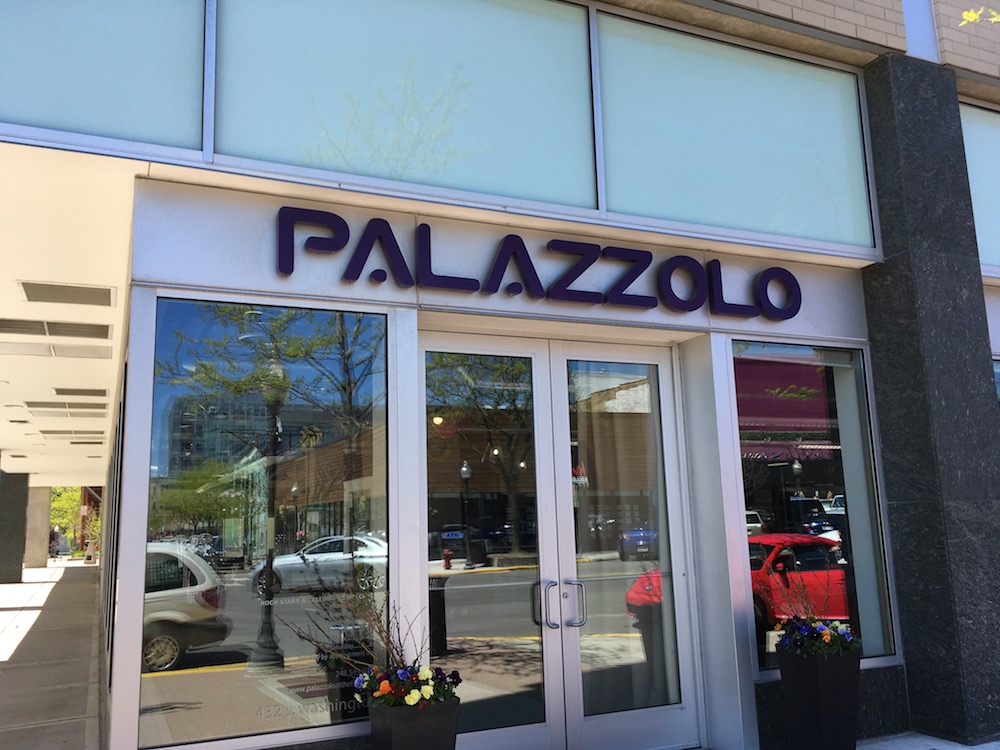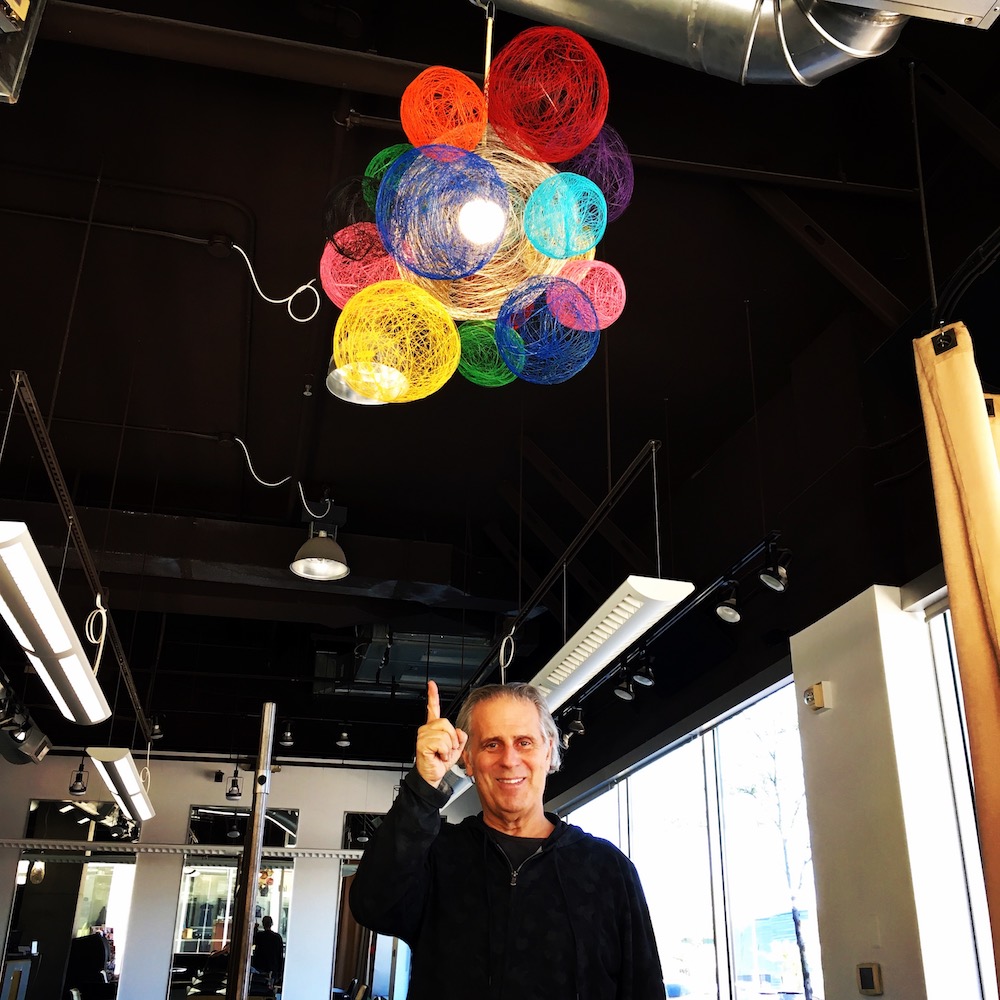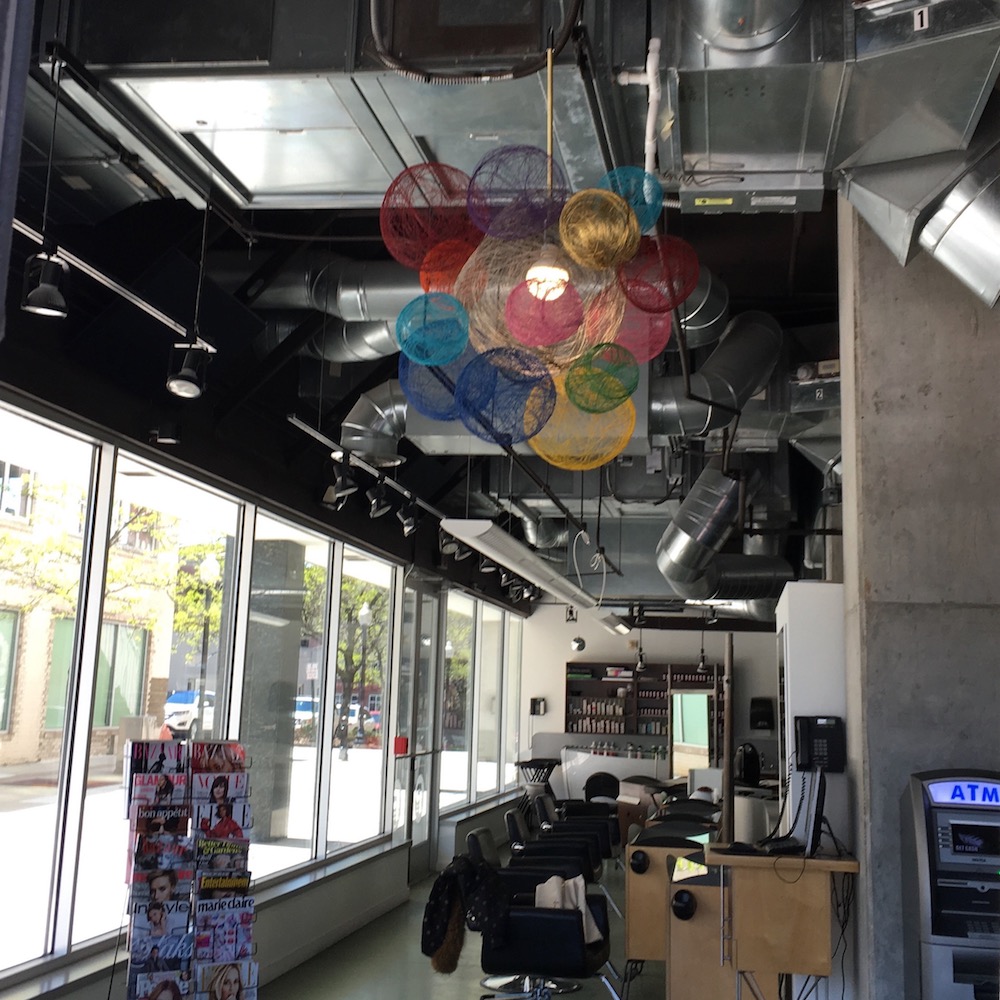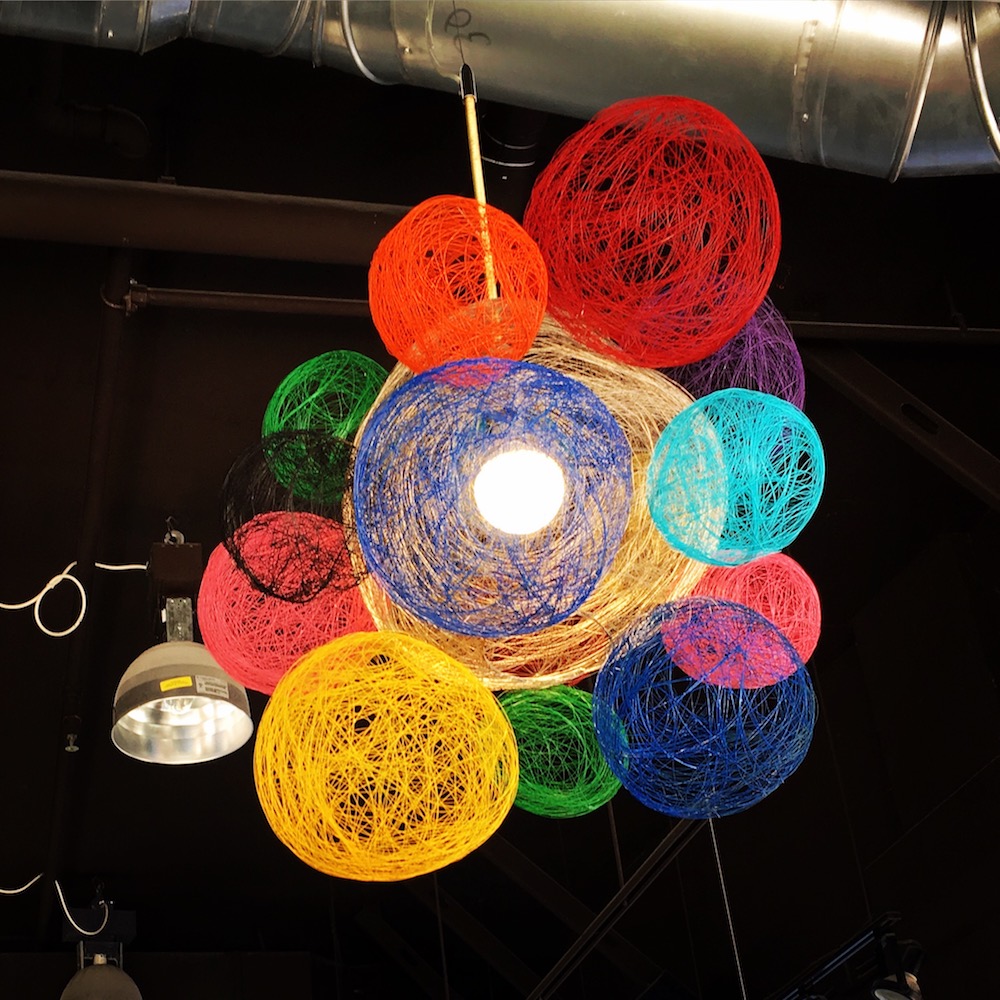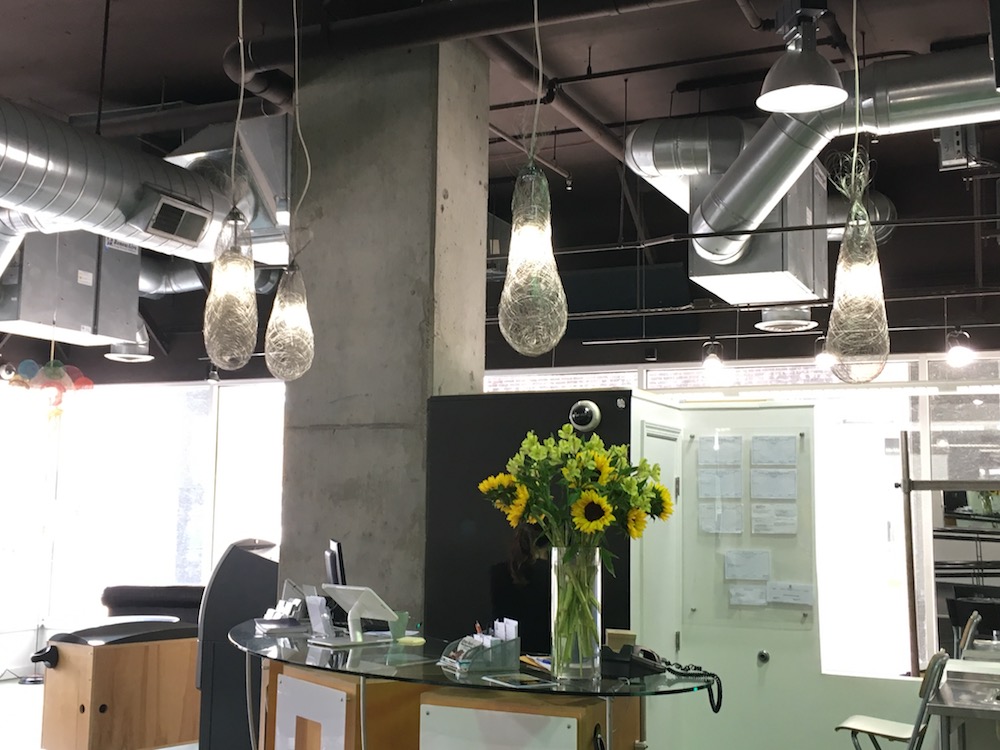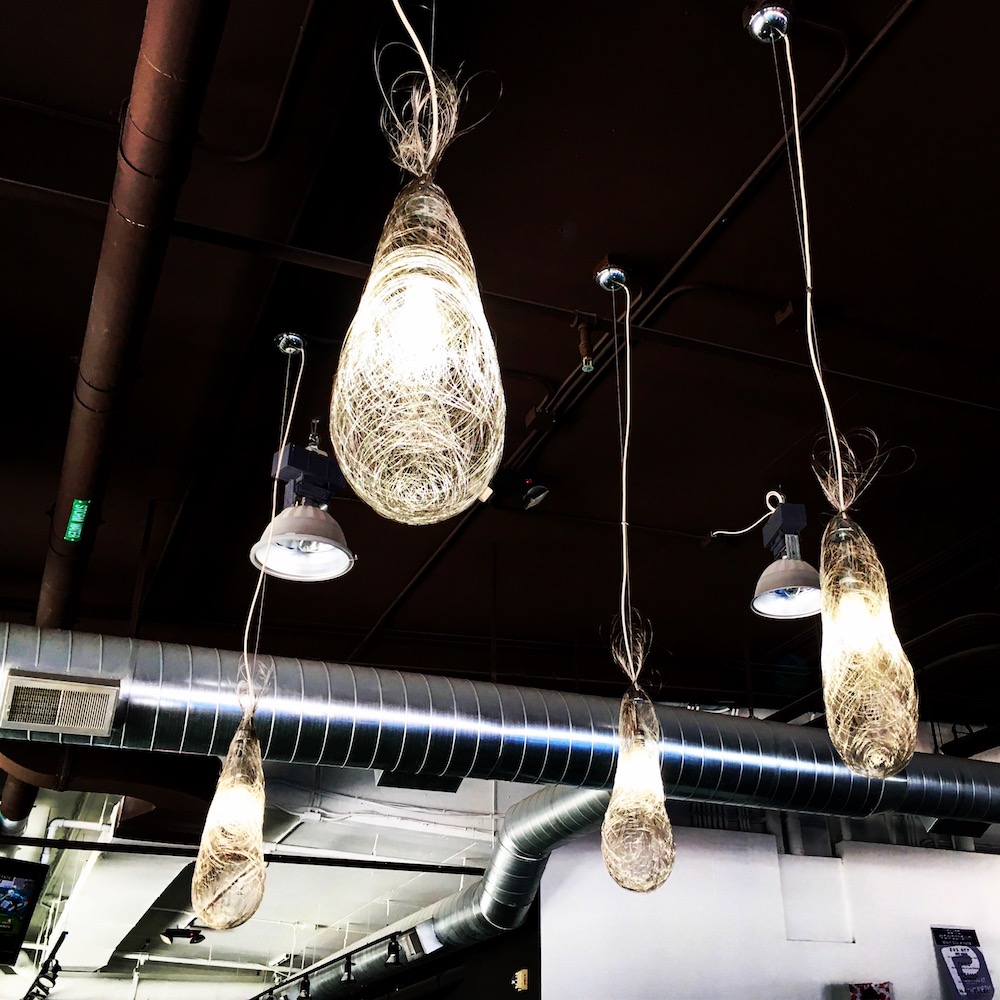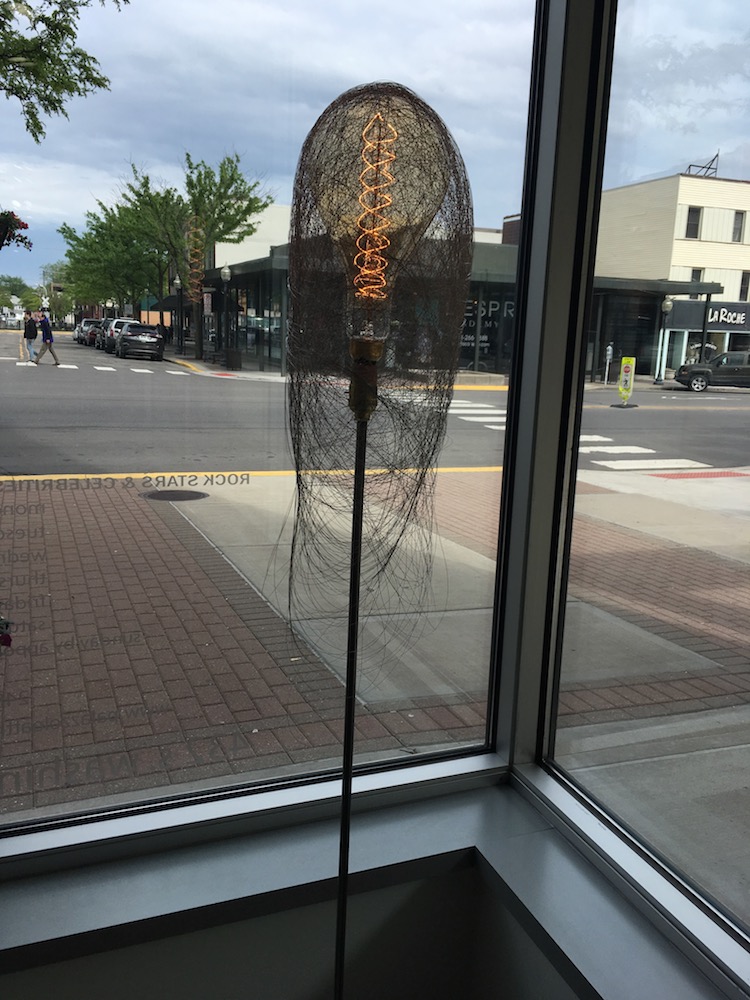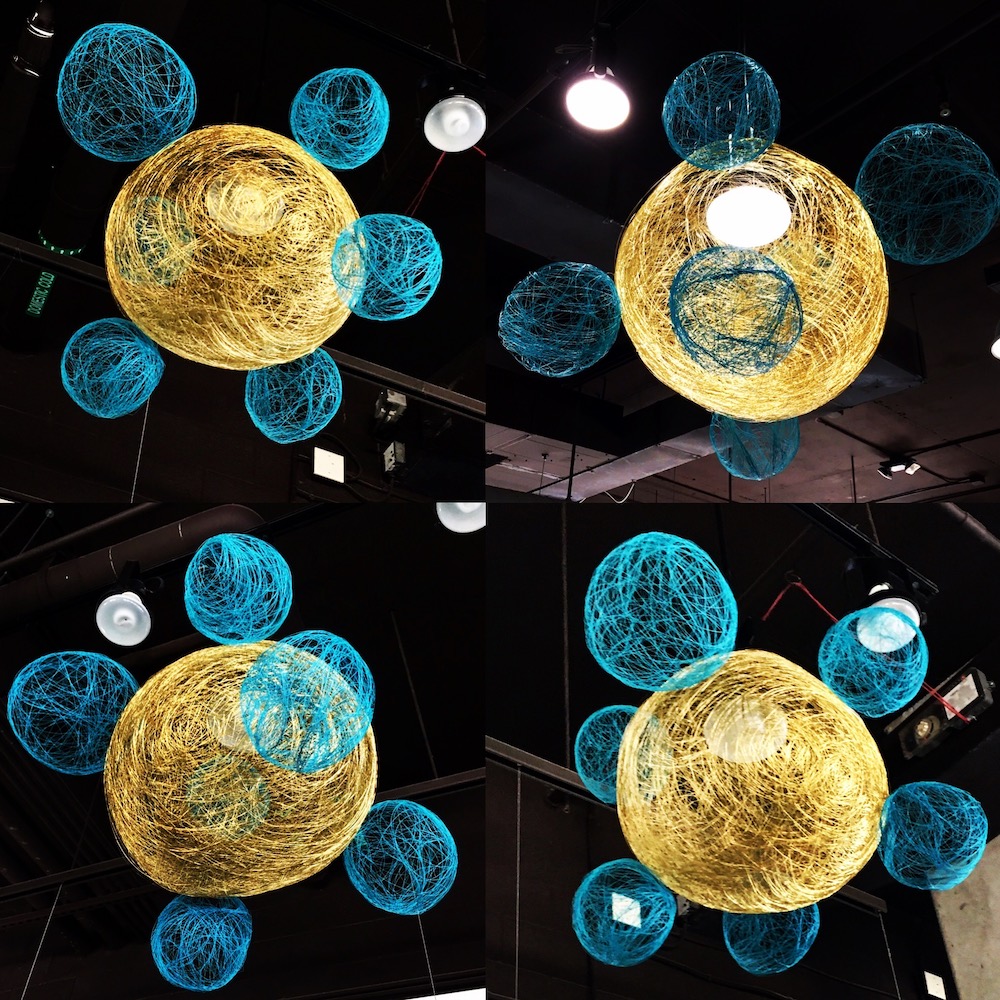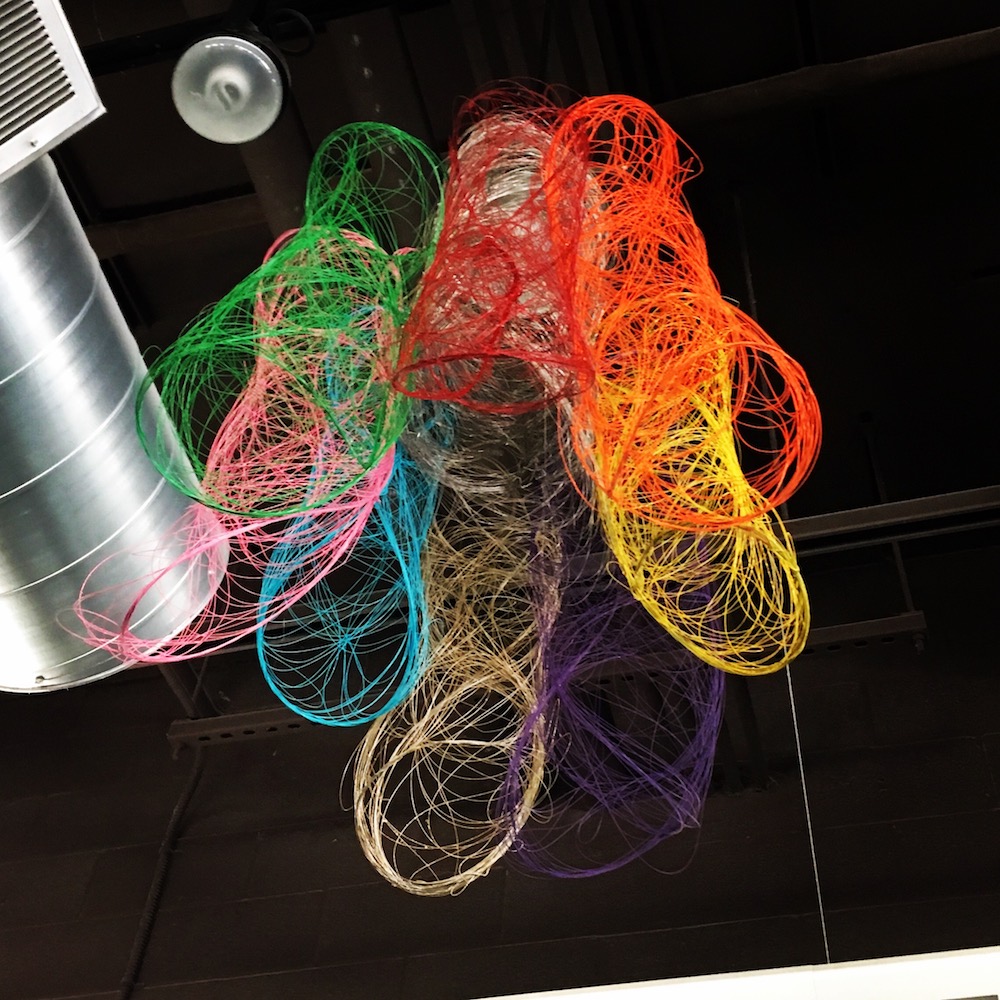Don’t read too much authority into that headline. I’m not one to brag of a winning formula for contests or art proposals. Success rates are low even for established artists, just as published authors are never guaranteed their next book will make it to print. It’s true what they say though, you can’t win if you don’t enter.
My process for art proposal renderings
I made this art installation rendering for a hospital proposal.
Here’s a rendering I did for a nail salon.
A while back I started making computer renderings to show prospective clients ideas for custom lighting configurations. As I got more into large-scale hanging art installations without lights, I realized the translucent look of my wire structures was pretty easy to replicate by adjusting the image opacity, without using expensive programs like Photoshop or Illustrator. Long before Microsoft had the faintest ambition of dragging and dropping a JPEG into a Word doc, I was laying out product catalogs, flyers, book covers and all kinds of stuff using Apple’s word processor, Pages. As powerful as Pages was twenty years ago, it remains to this day underrated, and virtually unknown even by Mac users who grew up with Word. Anyway, both Pages and Preview, (The native Mac OS photo viewer) now have an “Alpha” tool, which allows you to remove backgrounds from images, in addition to standard color and light value sliders. For an intermediate level graphic designer like me, that’s all I really need.
There are four basic shapes I make: balls, flat panels, curvy panels and open or closed tubes. To create a library of images to use for renderings, I started by making a sample of each shape in various colors. After photographing them all against a neutral background, I isolated the shapes in Pages. Now, I can simply drop a cluster of small pieces into a photo of any room, and arrange them as desired. Depth perspective and texture are achieved by adjusting the size and opacity of the individual pieces until the whole thing looks realistic. Occasionally I use shadows, but most of the layering effect happens by opacity tweaks.
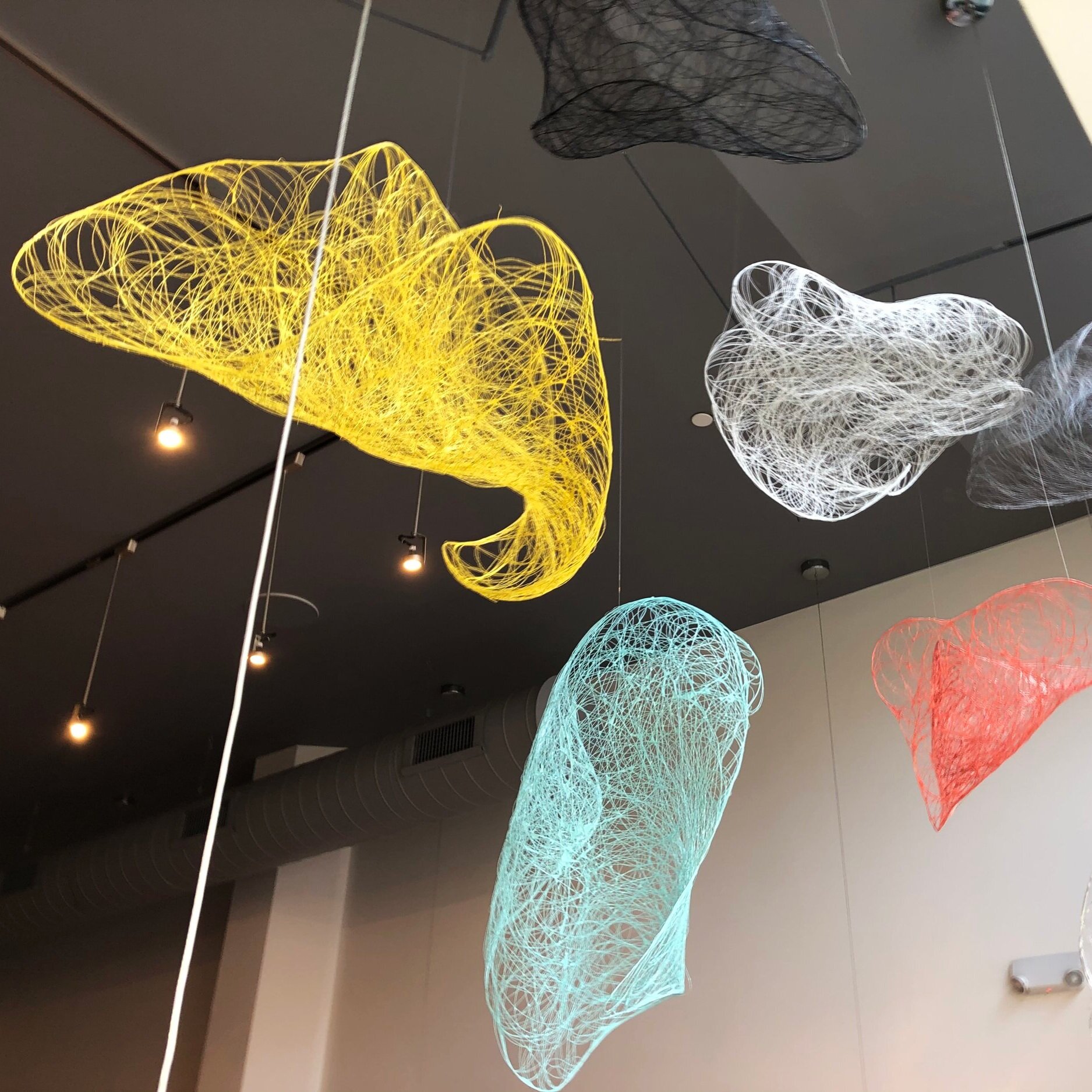
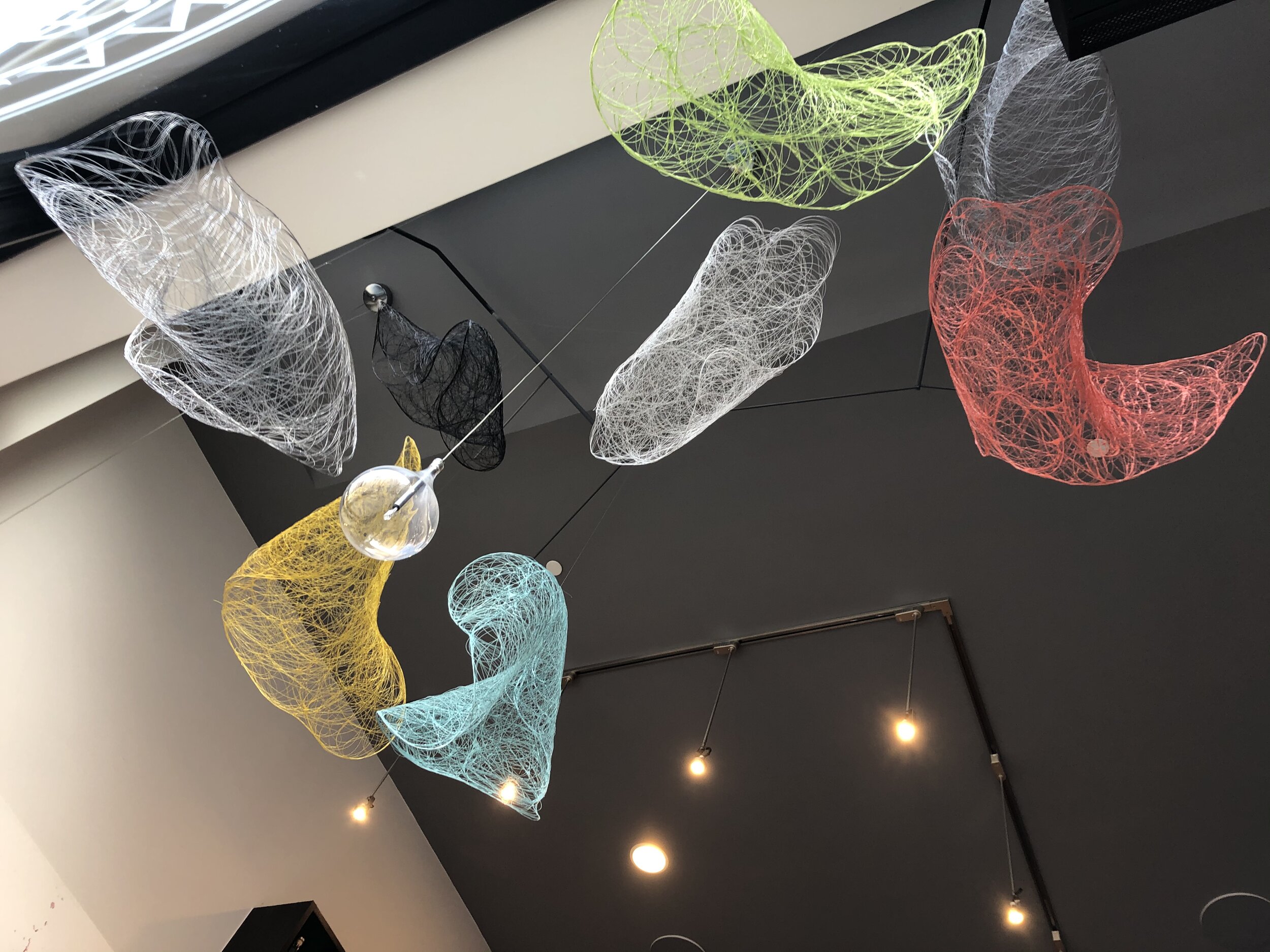
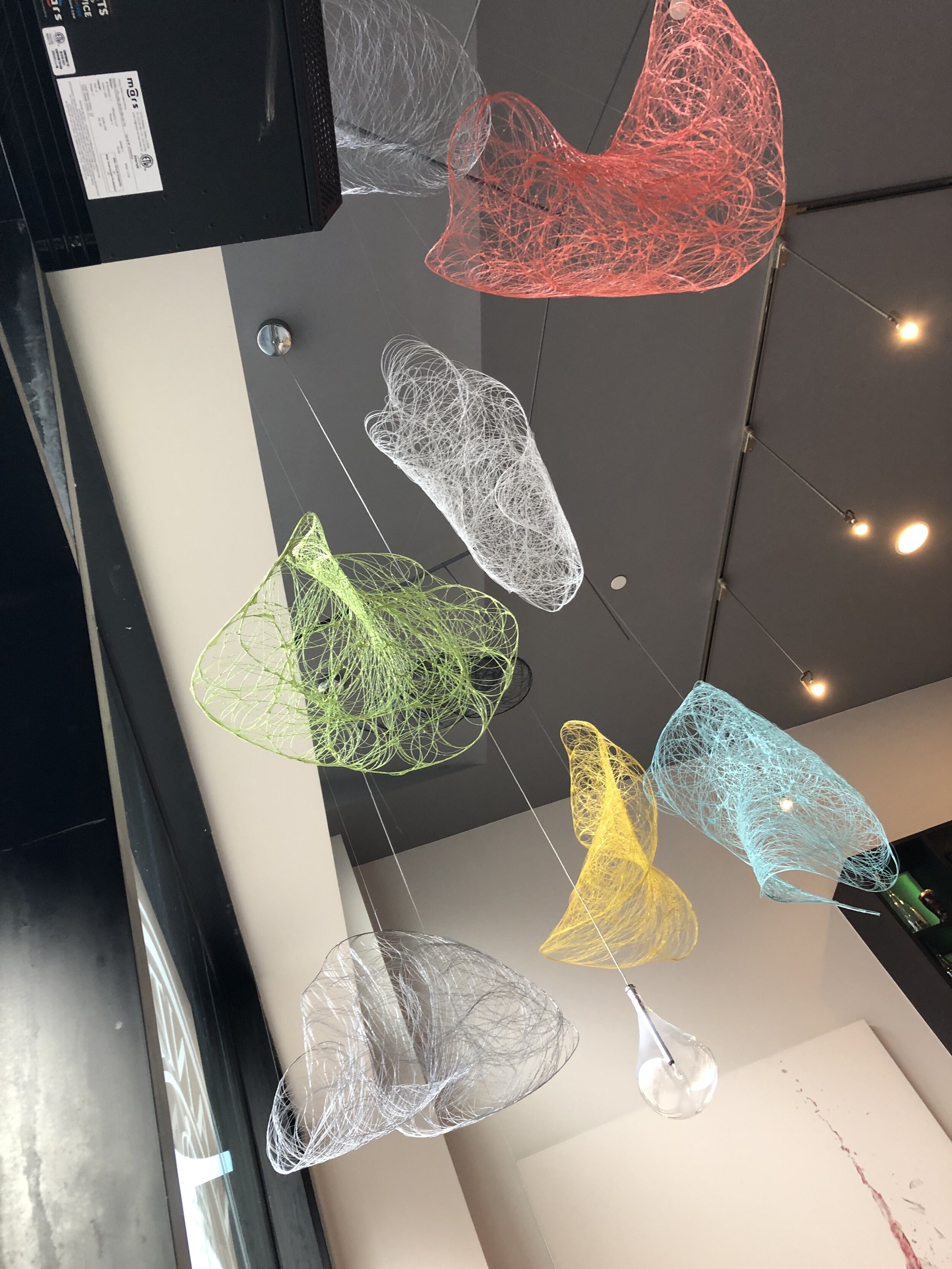
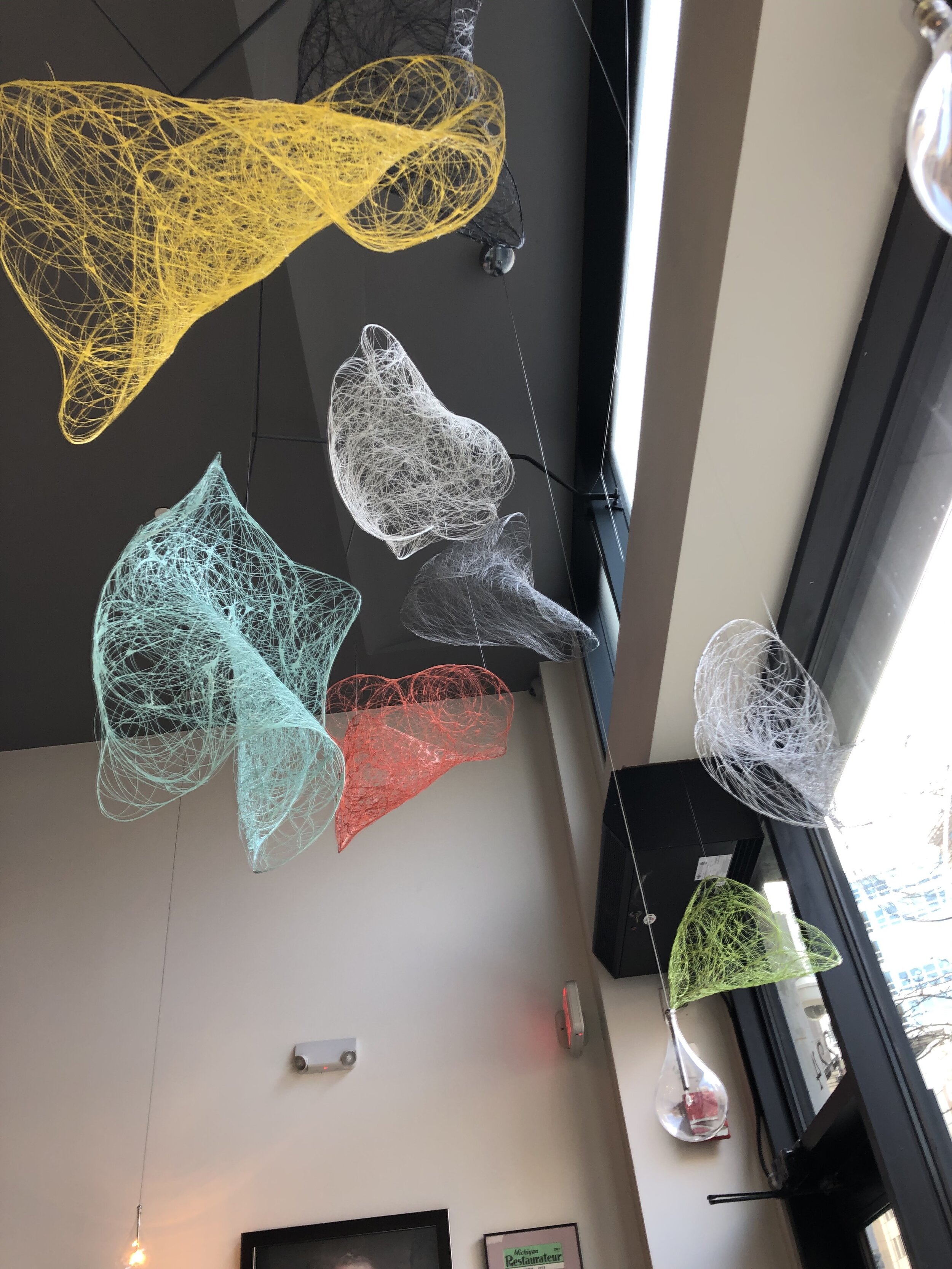
Fake it till you make it
Computer renderings for art installation proposals serve a purpose beyond just getting your idea across to others. They help you understand your idea better. They can (theoretically) help you figure out the true dimensions of the installation, which will help you provide a realistic time/cost estimate. Concept renderings can be shown to different clients, or resubmitted to multiple calls, simply by changing the background image of the room, and making a few edits for proportion and perspective. After your idea gets rejected a few times you might feel like you’ve wasted a lot of effort, but you haven’t. Eventually you’ll have a “virtual portfolio,” of various designs hanging in different locations. Your next big client might be a person who discovers these renderings on Instagram, or maybe it’s an interior designer sitting next you on an airplane. Stranger things have happened, but they won’t happen to you if you’re not ready to make the most of a chance encounter with a decision-maker who happens to like your work.












